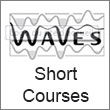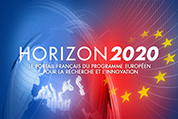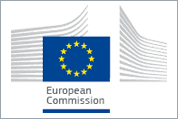Short-courses by INSERM, NTNU & TU Delft

3 SHort Courses
Venue: Zürich
Stefan Catheline
Institut National de la Santé et de la Recherche Médicale (INSERM)
Borge Arnsten
Norwegian University of Science and Technology (NTNU)
Läslo Evers
Delft University of Technology (DUT)
Three short courses will be combined within this week for time and travel efficiency. Each of the short course will span 1 ½ day. The following topics will be addressed.
1. Medical imaging and therapeutic application of ultrasounds (INSERM)
Physics of waves in the human body is explained in this first part of courses on ultrasounds. It includes the basis of refraction, diffraction and transduction. Focusing techniques in emission and reception on ultrasound medical array are then described. Construction of sonograms from the ultrasound echoes is explained as well as their interaction with leaving tissues. Ultrafast ultrasound scanners used nowadays in clinics introduces the last developments. Indeed, this new generation of scanners allows the detection of shear waves and fluid flaws in the human body : it is the field of shear wave elastography, a seismologic approach of the human body and ultra-sensitive Doppler imaging. At last time reversal is introduced as an adaptive methods able in the future to give images of the brain as well as therapeutic tools in soft tissues.
2. Seismic marine acquisition and processing (NTNU)
The course consists of two main parts. The first part addresses the basics of marine data acquisition including seismic sources, deghosting, receiver systems, acquisition of time-lapse data and broadband seismics. Environmental aspects and noise attenuation will also be considered.
The second part of the course is concerned with processing and imaging of seismic data and will address wave equation migration velocity analysis, 3D elastic forward modeling, 3D reverse-time migration and 3D Elastic Full Waveform inversion.
3. Seismo-acoustic waves in the earth, oceans and atmosphere (DUT)
Seismic waves in the solid earth and acoustic waves in the oceans and atmosphere contain lots of information on geophysical sources. Source characteristics can be obtained about, for example, earthquakes, explosions, avalanches, calving glaciers, iceberg, (underwater) volcanoes, meteors, severe weather, marine mammals and military activity. Energy generated by such sources can couple into the various media, like seismic energy from the solid earth into infrasound waves in the atmosphere. Furthermore, energy in the different media can be used to assess changes in for example composition, wind and temperature. Next to deterministic transient signals from these sources, there is also a rich ambient noise field in the different media. Such noise can also be used to obtain characteristics of the media, i.e., through interferometry. This short course will address the measurement, processing and interpretation of seismo-acoustic waves.
Also in the section
Key Facts
- Coordinated by Université Pierre et Marie Curie
- 15 participating partners
- 6 European countries and the USA
- 15 trained fellows
- Project budget: 3 227 952.96€
- Project duration: 4 years
- WAVES is a European project funded by the European Union’s Horizon 2020 research and innovation programme under the Marie Slodowska-Curie grant agreement n° 641943.
Contact
Coordinator:
Lapo Boschi (lapo.boschi @ upmc.fr)
Project Manager
Fanny Schultz (fanny.schultz @ sorbonne-universite.fr)



